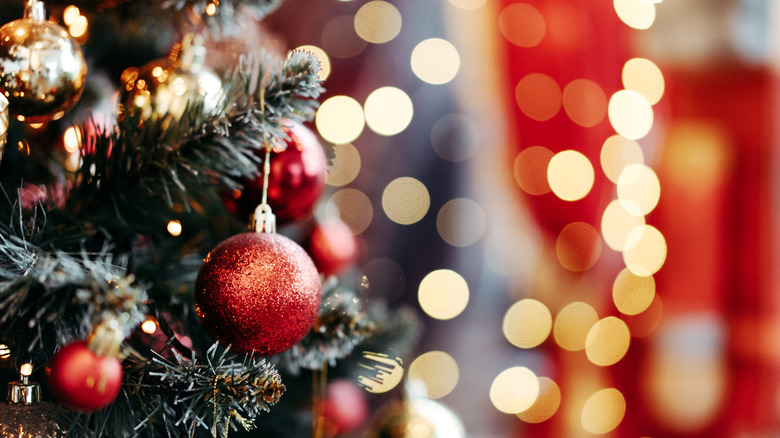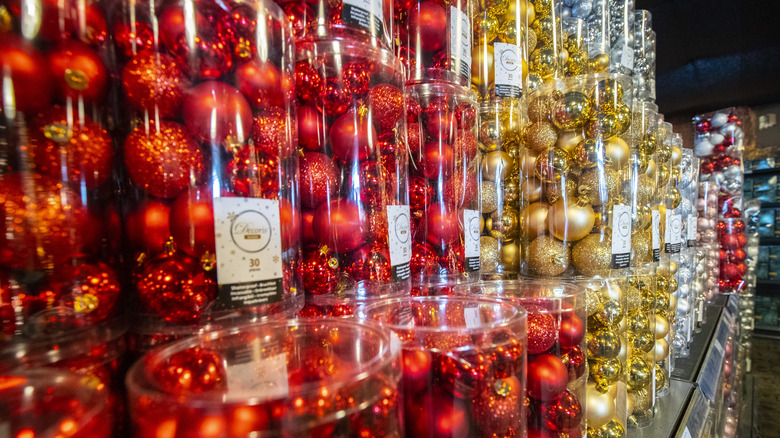The Real Reason We Put Ornaments On The Christmas Tree
The Christmas tree is a tradition that has lasted almost as long as the holiday itself, and is rooted in even older regional use of trees in religious and cultural events across the ancient world. The Celts, Romans, and even Egyptians are among those who incorporated trees into their respective winter celebrations. It was during medieval times that the modern decorated Christmas tree began to take shape. It was based on the "Paradise Tree" that was part of plays about Adam and Eve. The couple were often celebrated on December 24, and the trees, bearing apples in reference to the Garden of Eden, eventually came to be utilized as interior holiday decorations in western Germany (via Britannica).
In the same residence was typically a wooden pyramid meant to hold candles and figurines of characters relevant to the holiday. Over time the latter was combined with the tree, which in turn became the sole focus of interior holiday decoration, with candles, apples, and newer glass "baubles," among other things. The use of purpose-built ornaments, however, is much more recent (via History).
Christmas Tree ornaments in the U.S. were popularized by a chance purchase
Early modern Christmas trees began to expand somewhat outside of the German-speaking world by the 1600s, when reformer Martin Luther was struck by the sight of stars twinkling through the fir tree branches, which he associated with the night Jesus was born. He is said to have brought a tree into his home and attached candles, to re-create the moment for his family (per History). It wasn't much of a leap from candles to special objects used as tree ornamentation.
The custom really started to become internationally popular in the 1840s (via Best Life). When Queen Victoria married her German cousin Prince Albert, he brought the Christmas tree tradition with him to London, where it took hold. Across the ocean, German immigrants had already brought Christmas trees and their traditional ornamentation to North America by this time.
However, the latter remained unique to their communities until 1880, when the fledgling F.W. Woolworth Company purchased a box of them from a salesman. The staff were stunned when instead of sitting around as frivolous items that no customer was expected to be interested in, the ornaments sold within hours (via The Woolworth's Museum). The company proceeded to carry the product for years as it became an international brand, employing artisans in Germany, Russia, and even Japan to meet the newfound demand for high-quality Christmas ornaments (via The Culture Trip).

